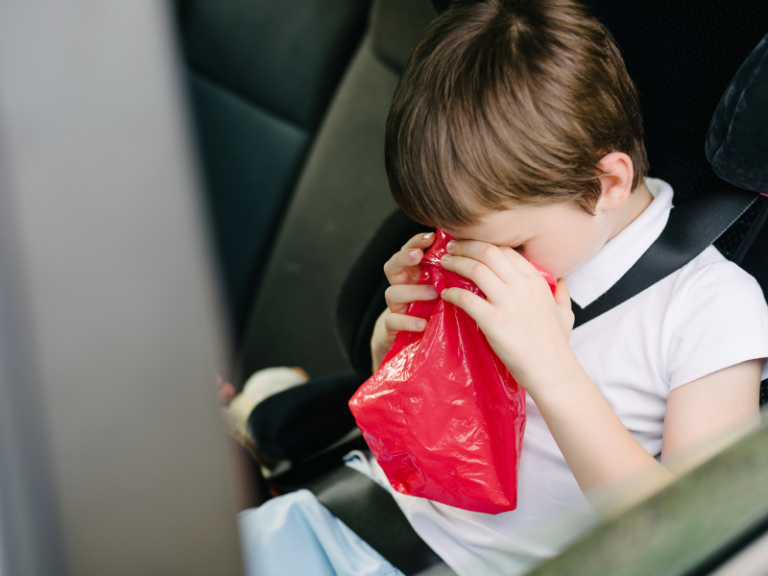The smell of vomit typically lasts about 1 to 2 days if left untreated.
The duration of vomit smell can vary widely depending on several factors, including the type of vomit, cleaning methods, and environmental conditions. In general:
Fresh Vomit Smell: The smell of fresh vomit typically lasts a few hours to a day, especially if cleaned promptly and thoroughly.
Lingering Odor: If the vomit is not cleaned up properly or if it has soaked into porous surfaces like carpet or upholstery, the smell can persist for several days to even a few weeks.
Environmental Factors: Temperature, humidity, and ventilation play a role. Warmer temperatures and higher humidity can intensify odors, while proper ventilation can help dissipate them more quickly.
To eliminate vomit odor effectively, cleaning the affected area promptly, using appropriate cleaning agents and techniques, and ensuring thorough ventilation is important.
The Science Behind Vomit Odor

- The Origins of Vomit’s Strong Odor Vomit’s strong and distinct odor can be attributed to several factors.
When a person vomits, he expels stomach contents containing partially digested food, stomach acids, and sometimes bile. This combination of substances contributes to the foul smell.
Additionally, the act of vomiting often involves forceful contractions of the stomach muscles, which can aerosolized tiny particles of vomit, dispersing the odor into the surrounding air. This makes the odor more noticeable and pervasive.
- Components Responsible for the Smell The smell of vomit is primarily due to the presence of various organic compounds, including:
Stomach Acids: Gastric acids, such as hydrochloric acid, are released during vomiting to aid in digestion. These acids have a pungent, sour odor.
Partially Digested Food: The partially digested food in the stomach contains a mix of proteins, carbohydrates, and fats, some of which can produce unpleasant odors as they break down.
Bile: Bile is a digestive liquid made by the liver and stored in the gallbladder. It has a bitter, unpleasant smell, and when it comes up during vomiting, it adds to the bad odor.
Microorganisms: Bacteria in the stomach and oral cavity can interact with the vomit, further altering its odor as they break down organic matter.
Gasses: Vomiting can release gasses such as sulfur compounds, known for their noxious odor, adding to the unpleasant smell.
Understanding the components responsible for vomit odor helps us comprehend why it is so potent and persistent, making it essential to address it effectively when it occurs.
Factors Affecting Odor Duration
A. Typical Duration of Fresh Vomit Odor The smell of fresh vomit typically lasts for about 1 to 2 days if left untreated. During this time, the odor can be quite strong and persistent, making it essential to address.
B. Factors Influencing Duration Several factors can influence how long the smell of fresh vomit lingers:
Surface Material:
The type of surface the vomit comes into contact with plays a significant role.
Porous materials like carpet and upholstery can absorb the odor, extending its duration, while non-porous surfaces like tile or hardwood floors may retain the smell for a shorter time.
The duration of fresh vomit odor can vary based on the surface material. But it typically lasts 1 to 2 days on non-porous surfaces like tile or glass, while it may linger for several days on porous materials like carpet or fabric.
Cleaning Method: The effectiveness of the cleaning method used to address the vomit stain and odor is crucial. Thorough cleaning and deodorizing can significantly reduce the duration of the smell.
Temperature: Higher temperatures can accelerate the release of odor molecules, making the smell more pronounced.
Conversely, cooler temperatures can slow down the release of odors, potentially extending their duration. On average, vomit odor can linger for about 1 to 2 days at room temperature.
Humidity: Humidity levels also play a role. Higher humidity can increase the intensity of odors, making them more noticeable.
In contrast, lower humidity levels may slow down the release of odor molecules, but they can still persist. Typically, in moderate humidity conditions, the smell of vomit can endure for 1 to 2 days.
Type of Food: The contents of the vomit, including the type of food consumed, can affect the duration of the odor. Foods with strong odors like garlic or certain spices may produce a more enduring smell.
Ventilation: Adequate ventilation in the affected area can help quickly dissipate the odor. Poor ventilation can trap the smell, making it linger for a longer time.
Prompt Cleanup: Acting swiftly to clean and deodorize the affected area can significantly reduce the duration of fresh vomit odor.
Fresh vomit odor usually lasts for 1 to 2 days, but various factors can make it go away faster or slower. Proper cleaning and good ventilation are essential for reducing the smell’s impact.
C. The Role of Ventilation in Dissipating Odors Proper ventilation is essential in helping dissipate odors and reducing their duration:
Air Exchange: Adequate ventilation, such as opening windows or using fans, encourages the exchange of indoor and outdoor air. This helps dilute the concentration of odor molecules indoors, making the smell less noticeable.
Faster Dispersal: Good ventilation accelerates the dispersion of odors into the surrounding environment, allowing them to dissipate more quickly. The effectiveness of this process depends on the airflow and the presence of fresh outdoor air.
Odor Removal: Ventilation helps disperse odors and contributes to their removal. As the odor molecules are carried away by circulating air, they become less concentrated in the affected area.
Lingering Vomit Odor
- Reasons for Persistent Vomit Odor Despite thorough cleaning efforts, vomit odor may persist for several reasons:
Porous Surfaces: Vomit can seep into porous materials like carpet, upholstery, and fabric. Even with cleaning, some odor molecules may remain trapped within these materials, gradually releasing the smell over time.
Residual Stains: Vomit often leaves behind stains that are difficult to remove completely. These stains can continue to emit odor even after cleaning.
Microscopic Residue: Tiny particles of vomit and its components may remain on surfaces, and microscopic residue can continue to produce odor as it breaks down.
Ineffective Cleaning: Inadequate or incomplete cleaning can leave behind odor-causing molecules. Cleaning should address both visible and invisible residue for optimal odor removal.
- Porous Surfaces and Inadequate Cleaning Porous surfaces, such as carpet and upholstery, are particularly prone to retaining vomit odor because they absorb both the liquid and the odor-causing molecules.
Inadequate cleaning, where only the surface is addressed, can exacerbate the problem. Here’s why these factors contribute to lingering odor:
Absorption: Porous materials allow vomit to penetrate deep into their fibers, making removing all traces of the odor-causing molecules challenging.
Incomplete Cleaning: When cleaning focuses solely on surface stains, underlying residue can persist. It’s crucial to address both surface and sub-surface areas to eliminate the odor source.
Release Over Time: Odor molecules trapped in porous materials can slowly be released into the air, creating a lingering and unpleasant smell, even days or weeks after the initial incident.
Complete Removal of Vomit Odor
- Effective Methods for Eliminating Vomit Odor
To ensure the complete removal of vomit odor, several effective methods can be employed:
Immediate Action: Act promptly to clean up the vomit immediately. The longer it sits, the more challenging it becomes to eliminate the odor.
Wear Protective Gear: Use disposable gloves and a mask to protect yourself during cleanup to avoid direct contact with the vomit and its odor.
Cleaning Solution: Prepare a cleaning solution using warm water and a mild detergent. Avoid using strong-smelling cleaners, as they can mask the odor instead of removing it.
Scrub and Rinse: Gently scrub the affected area with the cleaning solution, then rinse thoroughly with clean water. Be sure to remove all cleaning residue.
Deodorize: Apply a specialized vomit odor-neutralizing product to the area after cleaning. These products are designed to break down and neutralize odor molecules effectively.
Ventilation: Allow the area to dry and ventilate well. Fresh air circulation can help dissipate any remaining odors.
Professional Cleaning: Consider professional cleaning services for severe cases or lingering odors. They have access to specialized equipment and products for thorough odor removal.
- Importance of Thorough Cleaning and Deodorizing
Thorough cleaning and deodorizing are of paramount importance for several reasons:
Complete Odor Elimination: Proper cleaning and deodorizing techniques directly target and neutralize the odor molecules, ensuring their complete removal rather than masking the smell.
Prevention of Lingering Odor: Inadequate cleaning can lead to lingering odors, which can persist and become more challenging to address over time.
Preventing Recontamination: Proper cleaning reduces the risk of recontamination, where residual odor sources attract pests or encourage further staining.
Restoring Comfort: Effective odor removal restores the affected area to a clean and comfortable state, ensuring a healthy and pleasant environment.
Home Remedies and Commercial Products

- Home Remedies for Tackling Vomit Odor
When dealing with vomit odor, several home remedies can be effective in neutralizing the smell:
- White Vinegar: White vinegar is known for its odor-neutralizing properties.
Mix equal parts white vinegar and water and use this solution to clean the affected area. Be sure to rinse thoroughly afterward to remove any vinegar scent.
- Activated Charcoal: Activated charcoal is excellent for absorbing odors. Place activated charcoal sachets or containers near the odor source, and it will gradually absorb the smell.
- Citrus Peels: Citrus peels like lemon or orange have natural deodorizing qualities. Place them in the affected area or simmer them in water to release their pleasant aroma.
- Coffee Grounds: Used coffee grounds can absorb odors. Leave a bowl of dried coffee grounds near the vomit-affected area for 3 to 4 days to help eliminate the smell.
- Commercial Odor-Neutralizing Products
Commercial odor-neutralizing products are specifically designed to tackle strong and persistent odors, including vomit odor:
- Enzyme Cleaners: Enzyme-based cleaners break down organic compounds, effectively neutralizing the odor at its source. These cleaners are particularly effective for vomit odor removal.
- Odor Absorbers: Odor-absorbing products like activated charcoal or odor-absorbing gel beads can be placed near the affected area to absorb and neutralize the smell.
- Air Purifiers: High-quality air purifiers with activated carbon filters can help remove odor molecules from the air, providing long-term odor control.
- Carpet and Fabric Sprays: There are commercial sprays designed for use on carpets, upholstery, and fabrics that specifically target odor removal.
- Odor Eliminator Sprays: Odor-neutralizing sprays are designed to eliminate odors from various surfaces. They are convenient for spot treatment and can be used on both hard and soft surfaces.
Remove the Vomit Odor from Some Specific Surfaces
- Removing Vomit Odor from Various Surfaces
Vomit odor can permeate a variety of surfaces, including carpets, upholstery, and clothing. Here’s guidance on how to tackle vomit odor on these specific surfaces:
B. Specific Tips for Each Type of Surface
1. Carpet:
Immediate Cleanup: Begin by carefully removing any solid matter and blotting the area with paper towels to absorb excess liquid.
Prepare a Cleaning Solution: Mix warm water with a mild detergent or white vinegar. Avoid using hot water to clean and remove the odor of vomiting, as it can set the stain and odor.
Scrub and Rinse: Gently scrub the affected area using a cloth or sponge with the clean
ing solution. Rinse thoroughly with clean water.
Odor Neutralizer: Consider using a commercial enzyme-based cleaner or an odor-neutralizing spray specifically designed for carpets.
2. Upholstery:
Blotting: As with carpets, start by blotting the vomit to remove solids and excess liquid.
Cleaning Solution: Mix a mild detergent with water or use a specialized upholstery cleaner. Test a small, inconspicuous area first to ensure it doesn’t damage the fabric.
Spot Cleaning: Gently clean the affected area with the cleaning solution, not oversaturating the fabric.
Rinse and Dry: Rinse the cleaned area with a clean and damp cloth and make sure no soap residue is left.
Now, Let the upholstery air dry.
Baking Soda: If the odor persists, sprinkle baking soda over the vomiting area and let it sit for 15-30 minutes before vacuuming.
Odor Eliminator: Consider using a fabric-specific odor eliminator or spray designed for upholstery.
3. Clothing:
Immediate Action: Remove the soiled clothing and rinse the affected area with cold water to remove as much vomit as possible.
Pre-treat: Apply a small amount of liquid laundry detergent or dish soap directly to the stain and gently rub it with the soap.
Machine Wash: Wash the clothing in cold water, as hot water can set the stain and odor. Use an enzymatic laundry detergent, which effectively breaks down organic matter and odors.
Check Before Drying: Before placing the clothing in the dryer, ensure that the stain and odor are completely gone. Heat can set lingering odors.
Sunlight: If the odor persists, hang the clothing in direct sunlight, as sunlight can naturally help eliminate odors.
FAQs
Is it normal for vomit to have a strong odor?
Yes, vomit typically has a strong and unpleasant odor due to stomach acids and partially digested food.
How long does the smell of fresh vomit linger?
The smell of fresh vomit can last for a few hours to a day, depending on factors like cleanliness and ventilation.
Can vomit odor persist after cleaning it up?
Yes, vomit odor may persist if it hasn’t been thoroughly cleaned or if it has soaked into porous surfaces like fabric or carpet.
Is it possible to remove the vomit smell entirely?
Yes, you can usually remove vomit odor completely with proper cleaning and odor-eliminating methods.
Do certain factors affect how long vomit smells last?
Yes, factors like temperature, humidity, and the nature of the surface can influence how long vomit smells linger.
Is there a difference in how long the smell lasts indoors versus outdoors?
Yes, vomit smells tend to dissipate more quickly outdoors due to better ventilation.
Can vomit odor be reduced with household cleaners?
Yes, household cleaners and disinfectants can help eliminate vomit odor, but thorough cleaning is essential.
Does vinegar help in removing vomit odor?
Yes, vinegar can be effective in neutralizing vomit odors. Mix it with water and use it as a cleaning solution.
Are there commercial odor-neutralizing products available?
Yes, there are various commercial products designed to eliminate odors, including those from vomit.
Conclusion
Various factors can affect the duration of vomit smell, including the temperature and humidity.
Under typical conditions, the smell of vomit lasts about 1 to 2 days. However, it’s important to note that this duration can change based on the specific circumstances and cleaning methods employed.
Whether the issue is in your home, car, or any other space, promptly addressing vomit odor ensures a more comfortable and hygienic environment for everyone involved.

